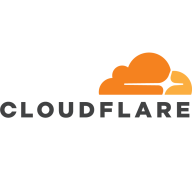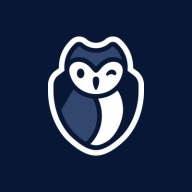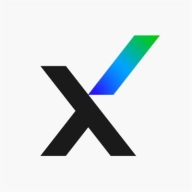


GitGuardian Platform and Trellix DLP compete in security and data loss prevention. GitGuardian appears to have the upper hand due to its specialized secret detection and developer-focused integrations.
Features: GitGuardian Platform offers secret detection and remediation with integrations into developer tools, high detection accuracy, and the "Dev in the loop" feature for quick remediation. Its pre-commit hooks also provide real-time feedback, enhancing development processes. Trellix DLP focuses on comprehensive data protection with endpoint security, emission control, and network blocking, but lacks specialized integrations for secret detection.
Room for Improvement: GitGuardian could benefit from more customization options, improved integration support, and better management of false positives, especially for specific identifiers and logs. Users also desire automation in feedback and historical scanning. Trellix DLP struggles with a complex user interface, lack of MacOS and Linux support, and limited browser compatibility, requiring significant training for virtualization and improved customer support responsiveness.
Ease of Deployment and Customer Service: GitGuardian offers flexible deployment options for on-premises and cloud environments, with highly regarded customer service and direct communication channels. Trellix DLP supports primarily on-premises deployment and some hybrid cloud but is criticized for its complicated setup process and less responsive customer service.
Pricing and ROI: GitGuardian's pricing is seen as reasonable due to its comprehensive secret detection capabilities, with demonstrated ROI from faster remediation and reduced exposure risk. It offers a free tier for smaller teams. Trellix DLP provides per-node pricing but is considered expensive by some users, with ROI less direct, focusing on general data protection benefits.



Cloudflare is a highly-regarded Content Delivery Network (CDN) and a Distributed Denial-of-Service (DDoS) protection solution. The robust global connectivity cloud platform that is Cloudflare ensures users are able to connect to the Internet quickly, securely, and reliably. Cloudflare is one of the world's largest networks in the marketplace today. Using Cloudflare, businesses, educational entities, NGOs, vloggers, bloggers, and anyone else with an internet presence can experience more secure, faster websites and applications.
Currently, there are millions of Internet locations on Cloudflare, and the Cloudflare network
continues to grow every day by the thousands. The solution is able to fulfill the requests for
millions of websites seamlessly and serves on average 45 million HTTP requests per second.
Cloudflare has safe, secure data centers in close to 300 cities worldwide to ensure every
client request is filled as quickly as possible. It is Cloudflare’s edge network that makes this
possible by keeping content and other services as close to each client as possible, so the
information requests are always only seconds away.
Many organizations that work in democracy, civil society, human rights, or the arts are able to
access Cloudflare's highest levels of protection for free via Project Galileo. Additionally, official
election websites can be secured from hacking and fraud through Cloudflare’s Project
Athenian, also at no additional cost.
Cloudflare can also help organizations of all sizes develop a robust zero-trust strategy to
ensure the highest levels of productivity and profitability. Employees, stakeholders, and end users have a greater level of satisfaction and overall improved user experience, which can, in
turn, result in higher revenues and overall ROI. Zero-trust and BYOD (bring your own device)
access ensure end users and employees always have the best resources and technology
available to them at all times.
Cloudflare benefits
Cloudflare has many benefits. Some of its most valuable benefits include:
- Faster load times
- Robust DNS security
- Intuitive cloud Web Application Firewall (WAF)
- Free universal SSL
- Image enhancement
- Automatic browser caching
- Next-generation cloud load balancer
- Accelerated Mobile Pages (AMP)
- Rate limiting
- Minification
- Zero-trust capabilities
- Cost-effective
- Reduced carbon footprint
Reviews from real users
“Many websites require an SSL certificate because they sell stuff and want SSL. Cloudflare
comes with an SSL certificate built in. It's automatic. You sign yourself up for Cloudflare, and
an SSL certificate automatically protects your website. If you have a connection between your
website and your host, the server, Cloudflare, and the host, you don't necessarily need a
certificate.” Spencer M., Owner at Tech Exchange
“What I like best about Cloudflare is that my company can use it to trace and manage
applications and monitor traffic. The solution tells you if there's a spike in traffic. Cloudflare
also sends you a link to check your equipment and deployment and track it through peering,
so it's a valuable tool.” Daniel P., Network Engineer at Ufinet
“The most valuable feature of Cloudflare is the GUI. You are able to control the solution very
well through the interface. There is a lot of functionality that is embedded in the service.” PeerSpot user, Competence Center Manager at a tech services company
GitGuardian helps organizations detect and fix vulnerabilities in source code at every step of the software development lifecycle. With GitGuardian’s policy engine, security teams can monitor and enforce rules across their VCS, DevOps tools, and infrastructure-as-code configurations.
Widely adopted by developer communities, GitGuardian is used by more than 500,000 developers and is the #1 app in the security category on the GitHub Marketplace. GitGuardian is also trusted by leading companies, including Instacart, Genesys, Orange, Iress, Beyond Identity, NOW: Pensions, and Stedi.
GitGuardian Platform includes automated secrets detection and remediation. By reducing the risks of secrets exposure across the SDLC, GitGuardian helps software-driven organizations strengthen their security posture and comply with frameworks and standards.
Its detection engine is trained against more than a billion public GitHub commits every year, and it covers 350+ types of secrets such as API keys, database connection strings, private keys, certificates, and more.
GitGuardian brings security and development teams together with automated remediation playbooks and collaboration features to resolve incidents fast and in full. By pulling developers closer to the remediation process, organizations can achieve higher incident closing rates and shorter fix times.
The platform integrates across the DevOps toolchain, including native support for continuously scanning VCS platforms like GitHub, Gitlab, Azure DevOps and Bitbucket or CI/CD tools like Jenkins, CircleCI, Travis CI, GitLab pipelines, and many more. It also integrates with ticketing and messaging systems like Splunk, PagerDuty, Jira and Slack to support teams with their incident remediation workflows. GitGuardian is offered as a SaaS platform but can also be hosted on-premise for organizations operating in highly regulated industries or with strict data privacy requirements.
Trellix DLP is the ultimate data loss prevention (DLP) solution, safeguarding organizations' sensitive data from unauthorized access, disclosure, or alteration. This robust system monitors and regulates data flows across networks, emails, and the web, identifying and shielding various data types such as financial, personal, intellectual property, and regulated data. Employing encryption, access control, DLP policies, and monitoring, it secures data both at rest and in transit, ensuring compliance with data security regulations and industry standards. With customizable deployment options, including on-premises, cloud-based, and hybrid, Trellix DLP offers comprehensive protection and rapid response to data loss incidents.
We monitor all Data Loss Prevention (DLP) reviews to prevent fraudulent reviews and keep review quality high. We do not post reviews by company employees or direct competitors. We validate each review for authenticity via cross-reference with LinkedIn, and personal follow-up with the reviewer when necessary.